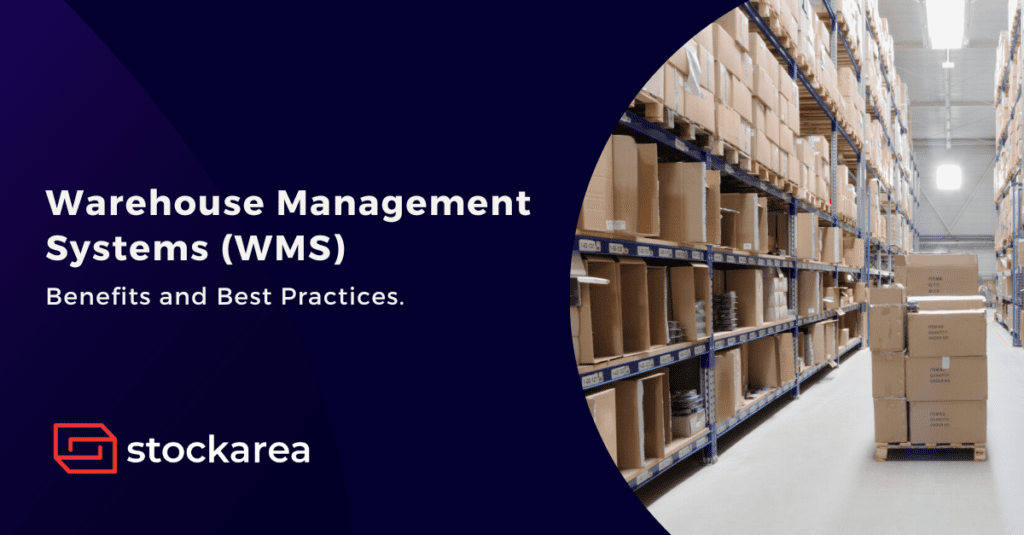In today’s business landscape, effective warehouse management is essential to meet customer demands and remain competitive. To achieve this, many businesses are turning to Warehouse Management Systems (WMS), a powerful tool to help enhance their warehouse operations. By implementing a WMS, businesses can effectively manage their challenges and enhance overall efficiency
What is a Warehouse Management System (WMS)?
A WMS, or Warehouse Management System, is a software solution designed to facilitate the coordination and management of a company’s storage facilities. Its primary function is to efficiently monitor inventory stocks, streamline various warehouse management procedures, and optimize the storage and retrieval of goods. WMS can be seamlessly integrated with other applications, such as ERP (Enterprise Resource Planning) software, TMS (Transportation Management System), and OM (Operations Management), therefore enabling smooth communication across different points in the supply chain.
Benefits of Implementing a WMS
- Enhanced Inventory Management:
Warehouse management systems enable businesses to precisely monitor stock levels, track the movement of stock, and optimize storage capacity. Through an inventory management system, businesses can gain real-time visibility into their inventory, enabling them to effectively track stock levels, reduce carrying costs, and optimize order fulfillment rates.
- Increased Operational Efficiency:
Implementing a WMS eliminates the need for time-consuming and error-prone manual processes such as order picking, packing, and shipping. With the help of this warehouse automation, businesses can fulfill orders more efficiently, increase productivity and reduce operational expenses.
- Improved Warehouse Space Utilization:
A WMS can optimize the warehouse layout, ensuring products are placed correctly. It facilitates efficient slotting, minimizing pick-up time and travel distance while maximizing space utilization. This streamlines manual inventory management and warehousing and improves overall efficiency.
- Accurate Demand Planning:
A WMS plays a vital role in accurately predicting and planning for changing demand patterns by analyzing historical data and trends. This enables businesses to optimize their inventory levels, reduce stockouts, and improve overall demand forecasting accuracy.
- Enhanced Customer Satisfaction:
With the assistance of a WMS, businesses can ensure efficient order processing, precise fulfillment, and on-time delivery, leading to enhanced customer satisfaction. The system’s real-time order tracking capabilities offered by the system enable businesses to provide transparent and proactive communication with their customers, further elevating the overall customer experience.
- Enhanced Customer Satisfaction:
With the help of a WMS, orders can be processed quickly, fulfilled precisely, and delivered on time, all of which contribute to greater customer satisfaction. The system’s real-time order updates allow businesses to be transparent with their clients and improve their service.
Best Practices for Implementing a WMS:
Here are some of the best practices for implementing a WMS.
- Thoroughly Assess Business Requirements
Before implementing a WMS, conducting a comprehensive assessment of your business needs and processes is crucial. Identify the key pain points, objectives, and desired outcomes. This analysis will help in choosing the right WMS solution that meets your requirements.
- Ensure Data Accuracy and Integration
Data integrity is vital for a successful WMS implementation. Ensure your data is accurate, consistent, and up-to-date before migrating to the new system. Seamless integration with other systems like ERP, order management, and transportation management is vital for smooth data flow throughout the supply chain.
- Employee Training
Effective training for warehouse staff is crucial for a successful WMS implementation. Provide comprehensive training programs to ensure the smooth adoption of the system and maximize its benefits. Implement effective change management strategies to address any employee resistance or concerns, fostering a positive transition to the new processes and workflows.
- Regular System Maintenance and Upgrades
Establishing a regular maintenance schedule is essential to keep the WMS running smoothly. Regular updates and upgrades should be performed to leverage new features, enhance security, and address any software bugs or issues. By staying up to date with system maintenance, you can ensure optimal performance and long-term success of your WMS implementation.
- Continuous Improvement and Optimization
A WMS implementation should be viewed as an ongoing process rather than a one-time event. Regularly analyze the system’s performance, gather feedback from warehouse staff, and identify areas for improvement. Implement quality control processes within your WMS to ensure accurate order fulfillment and minimize errors. This can include random sampling, quality checks, and implementing measures to identify and rectify discrepancies.
- Implement Barcode or RFID Technology
Enhance the accuracy and speed of inventory tracking within your WMS by implementing barcoding or RFID (Radio Frequency Identification) technology. Utilizing scanning barcodes or using RFID tags can automate capturing and updating inventory information, reducing errors and improving overall efficiency.
- Collaborate with Suppliers and Carriers
Extend the benefits of your WMS beyond the warehouse by integrating with suppliers and carriers. Sharing real-time information on inventory levels, order statuses, and shipment tracking can improve coordination, reduce lead times, and enhance supply chain visibility. Store inventory management systems can further help optimize overall supply chain performance.
- Regularly Review and Optimize Warehouse Layout
As your business evolves and your product offerings change, it’s important to regularly review and optimize the layout of your warehouse. Analyze product velocity, demand patterns, and storage requirements to reconfigure the placement of items within the warehouse. This can minimize travel time, improve picking efficiency, and maximize available space.
Conclusion
Implementing a Warehouse Management System (WMS) helps in supply chain optimization. From enhanced inventory management to increased operational efficiency and improved customer satisfaction, a WMS can significantly streamline processes and drive business success. By following best practices such as thorough assessment, data integration, employee training, and working on improving your procedures, companies can maximize the value derived from their WMS and stay ahead in today’s competitive market. Embracing technology and leveraging the power of a WMS is a strategic step toward achieving operational excellence in warehouse management.
